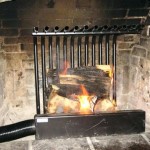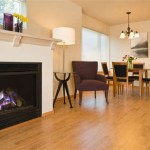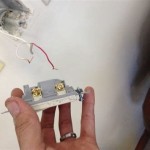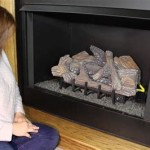DIY Outdoor Gas Log Fireplace: A Comprehensive Guide
An outdoor gas log fireplace provides a sophisticated and functional focal point for any outdoor living space. It offers the ambiance of a traditional wood-burning fireplace without the hassle of sourcing and managing firewood. Constructing a DIY outdoor gas log fireplace is a project achievable for individuals with moderate DIY skills and a commitment to safety regulations. This article details the process, covering planning, materials, construction, and safety considerations.
Planning and Design Considerations
The initial phase of constructing a DIY outdoor gas log fireplace involves meticulous planning and design. This includes defining the desired aesthetic, determining the appropriate size, and considering the spatial layout of the outdoor area. Careful planning ensures the fireplace integrates seamlessly into the existing landscape and meets functional requirements.
Aesthetic Design: The design should complement the existing architecture of the house and the overall landscape design. Common styles include rustic, modern, and traditional. Rustic designs often incorporate natural stone or brick, while modern designs might utilize concrete or metal. Choosing a style that aligns with the existing environment will create a cohesive and visually appealing outdoor space.
Size and Dimensions: The size of the fireplace should be proportional to the size of the outdoor area. A large fireplace in a small space can overwhelm the area, while a small fireplace in a large space may appear insignificant. Consider the seating arrangement and intended use of the space when determining the fireplace dimensions. A larger fireplace will provide more heat and visual impact, but will also require more materials and a larger footprint.
Location and Layout: The location of the fireplace should be carefully considered to minimize interference with existing structures and utilities. Check for underground pipes, power lines, and septic systems before commencing any excavation. The fireplace should also be positioned away from flammable materials, such as trees, shrubs, and fences. Consider prevailing winds when choosing the location to minimize smoke (if using a vented system) and ensure optimal heat distribution.
Ventilation Requirements: Gas fireplaces can be vented or vent-free. Vented fireplaces require a chimney or flue to exhaust combustion byproducts. Vent-free fireplaces, while seemingly simpler, require adequate ventilation in the surrounding area to prevent the build-up of carbon monoxide. Check local building codes and regulations to determine the appropriate ventilation requirements for the specific location and fireplace design. Consulting with a qualified HVAC professional is highly recommended to ensure proper ventilation and safety.
Gas Line Access: Access to a gas line is essential for a gas log fireplace. If an existing gas line is not readily available, one will need to be installed by a qualified gas plumber. This involves running a gas line from the main gas meter to the location of the fireplace. The gas line must be properly sized and installed according to local codes and regulations. A shut-off valve should be installed near the fireplace for safety and maintenance purposes.
Materials and Tools Required
The selection of appropriate materials is crucial for the durability and longevity of the outdoor gas log fireplace. Choosing high-quality, weather-resistant materials will ensure the fireplace withstands the elements and provides years of enjoyment. Similarly, having the right tools on hand will streamline the construction process and ensure a professional-looking result.
Construction Materials: Common construction materials include concrete blocks, bricks, natural stone, and metal. Concrete blocks provide a sturdy and cost-effective foundation. Bricks offer a classic and durable finish. Natural stone adds a rustic and aesthetically pleasing element. Metal, such as stainless steel, can be used for accents or for the entire structure in modern designs. The choice of materials will depend on the desired aesthetic and the budget.
Gas Log Set Components: A gas log set consists of the burner, logs, valve, and connector hoses. The burner is the component that produces the flame. The logs are typically made of ceramic or refractory cement and are designed to resemble real wood logs. The valve controls the gas flow and allows for adjustment of the flame height. Connector hoses connect the gas supply to the burner. Select a gas log set that is appropriately sized for the fireplace and meets all safety standards.
Mortar and Adhesive: Mortar is used to bind the construction materials together. Choose a mortar that is specifically designed for outdoor use and is resistant to freeze-thaw cycles. Adhesive may be required for attaching stone or other decorative elements to the fireplace structure. Select an adhesive that is compatible with the chosen materials and is rated for outdoor use.
Tools: Essential tools include a shovel, level, trowel, measuring tape, hammer, chisel, concrete mixer (optional), safety glasses, and gloves. A concrete mixer can be used to streamline the mixing of mortar. Safety glasses and gloves are essential for protecting the eyes and hands during construction. A masonry saw may be required for cutting bricks or stones. A gas leak detector is crucial for testing the gas connections after installation.
Safety Equipment: Safety is paramount during the construction of a gas fireplace. Wear appropriate safety gear, including safety glasses, gloves, and a dust mask (when cutting or mixing materials). Ensure the work area is well-ventilated. Follow all safety instructions provided by the manufacturers of the materials and tools being used. If working with gas lines, it is strongly recommended to hire a qualified gas plumber.
Construction Process: Step-by-Step Guide
The construction of a DIY outdoor gas log fireplace involves a series of steps, from preparing the foundation to installing the gas log set. Following these steps carefully will ensure a safe and functional fireplace.
Foundation Preparation: The foundation is the base of the fireplace and must be strong enough to support the weight of the structure. Excavate the area for the foundation to the required depth, typically below the frost line to prevent shifting due to freezing and thawing. Pour a concrete slab or build a foundation using concrete blocks. Ensure the foundation is level and square. Allow the concrete to cure completely before proceeding to the next step.
Building the Fireplace Structure: Once the foundation is prepared, begin building the fireplace structure using the chosen construction materials. Lay concrete blocks, bricks, or stones according to the design. Use mortar to bind the materials together. Ensure each course is level and plumb. Leave an opening for the gas line connection. If building a vented fireplace, construct a chimney or flue according to local building codes. Reinforce the structure with steel rebar for added stability.
Installing the Gas Line: The gas line should be installed by a qualified gas plumber. The plumber will run the gas line from the main gas meter to the fireplace location. The gas line must be properly sized and installed according to local codes and regulations. A shut-off valve should be installed near the fireplace for safety and maintenance purposes. The gas line should be pressure-tested to ensure there are no leaks.
Installing the Gas Log Set: Once the gas line is installed, the gas log set can be installed. Follow the manufacturer's instructions for installation. Connect the gas connector hose to the gas supply line and the burner. Place the ceramic or refractory logs around the burner according to the manufacturer's instructions. Ensure the logs are properly positioned to allow for proper flame distribution.
Testing and Inspection: After the gas log set is installed, test the fireplace for proper operation. Turn on the gas supply and ignite the burner. Adjust the flame height using the valve. Check for gas leaks using a gas leak detector. Inspect the fireplace structure for any cracks or weaknesses. Contact a qualified professional for inspection to ensure adherence to local building codes and safety standards.
Finishing Touches: Add finishing touches to enhance the aesthetic appeal of the fireplace. This may include adding a stone veneer, installing a decorative mantel, or landscaping around the fireplace. Keep flammable materials away from the fireplace. Provide seating and other amenities to create a comfortable and inviting outdoor living space.
Safety Precautions and Maintenance: Regular safety checks and maintenance are essential for ensuring the safe and reliable operation of the gas log fireplace. Always follow the manufacturer's instructions for operation and maintenance. Inspect the gas line and connections regularly for leaks. Clean the burner and logs periodically to remove debris. Check the ventilation system (if applicable) for obstructions. Never store flammable materials near the fireplace. Ensure the area around the fireplace is clear of obstructions.
By following these steps meticulously and prioritizing safety, constructing an outdoor gas log fireplace can significantly enhance the enjoyment and value of an outdoor living space. Remember to obtain necessary permits and consult with qualified professionals when dealing with gas lines and structural elements.

How To Plan For Building An Outdoor Fireplace

67 Creative Outdoor Fireplace Designs For Men In 2024 Kits Diy

How To Make An Outdoor Gas Fireplace With Diy Pete

Diy Outdoor Fireplace Ideas

Diy Outdoor Fireplace Kit Fremont Makes Hardscaping And Easy

How To Build An Outdoor Fireplace Step By Guide Buildwithroman
:max_bytes(150000):strip_icc()/chrisjulia-971f3f9eb708447bbd364fc7f4a16280.jpg?strip=all)
10 Free Outdoor Fireplace Construction Plans

Saguaro Diy Outdoor Fireplace Plan

How To Make An Outdoor Gas Fireplace With Diy Pete

Build An Outdoor Fireplace The Shed
Related Posts








